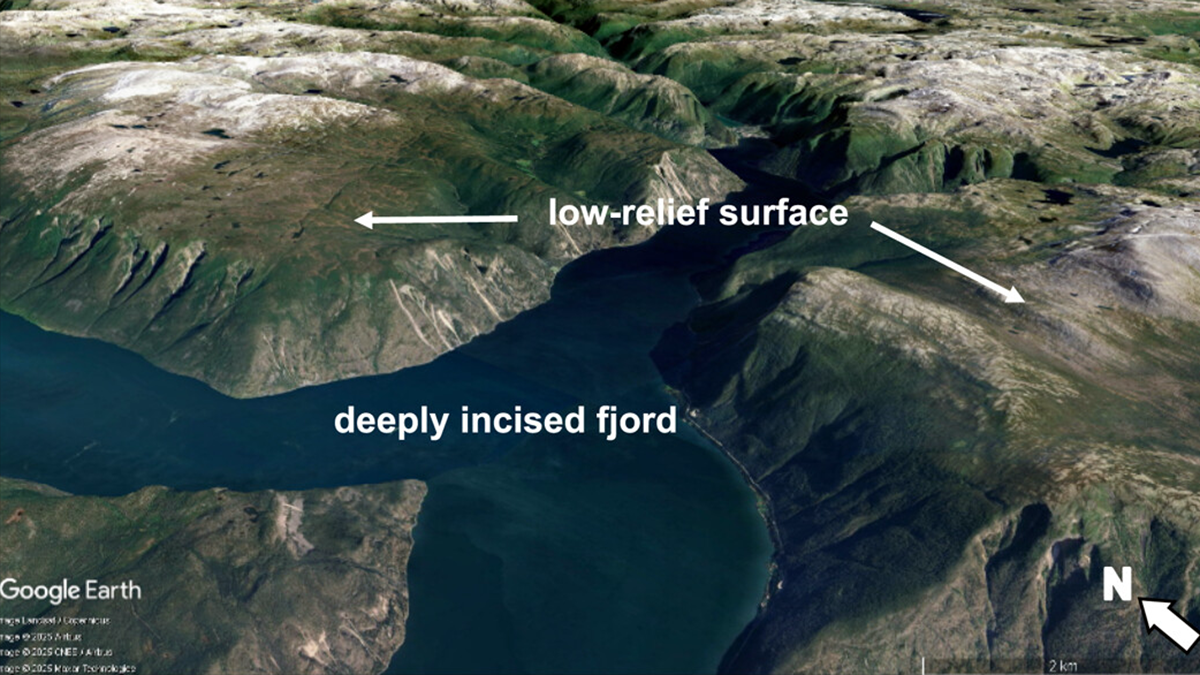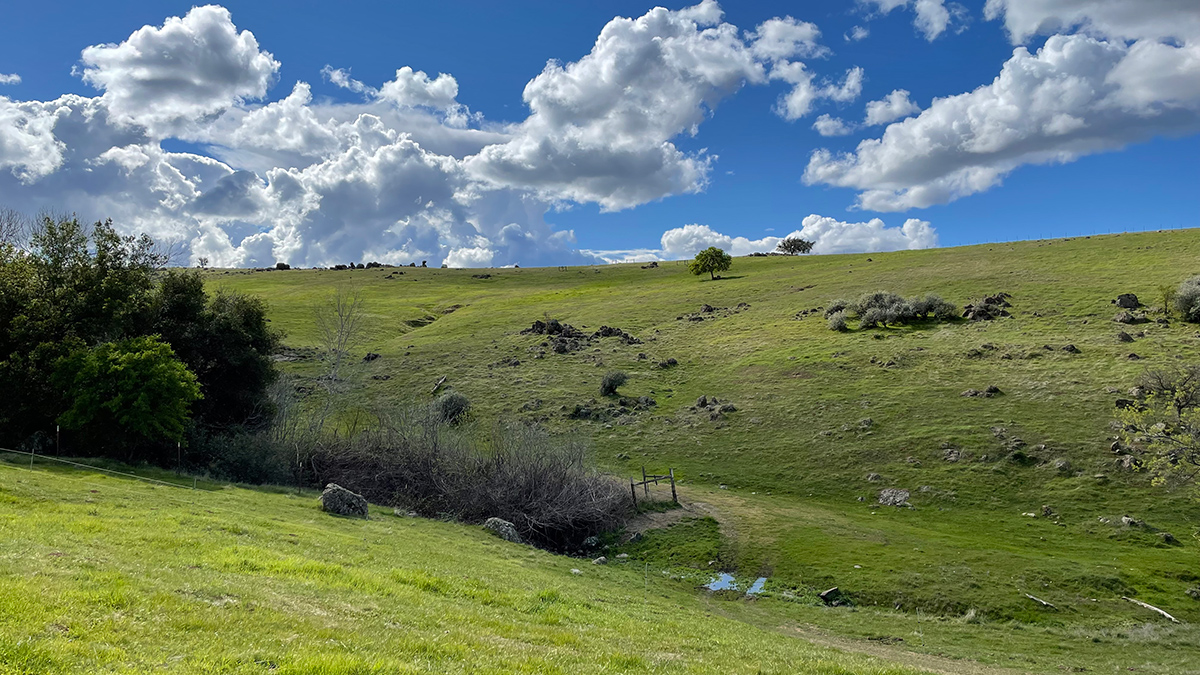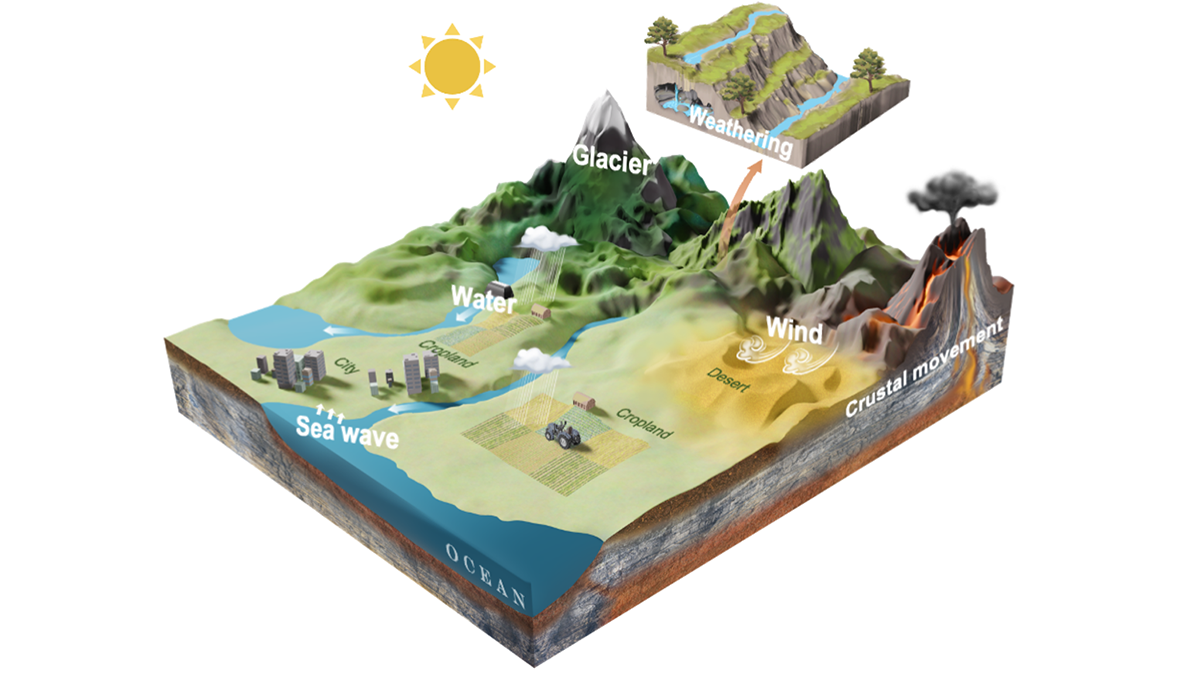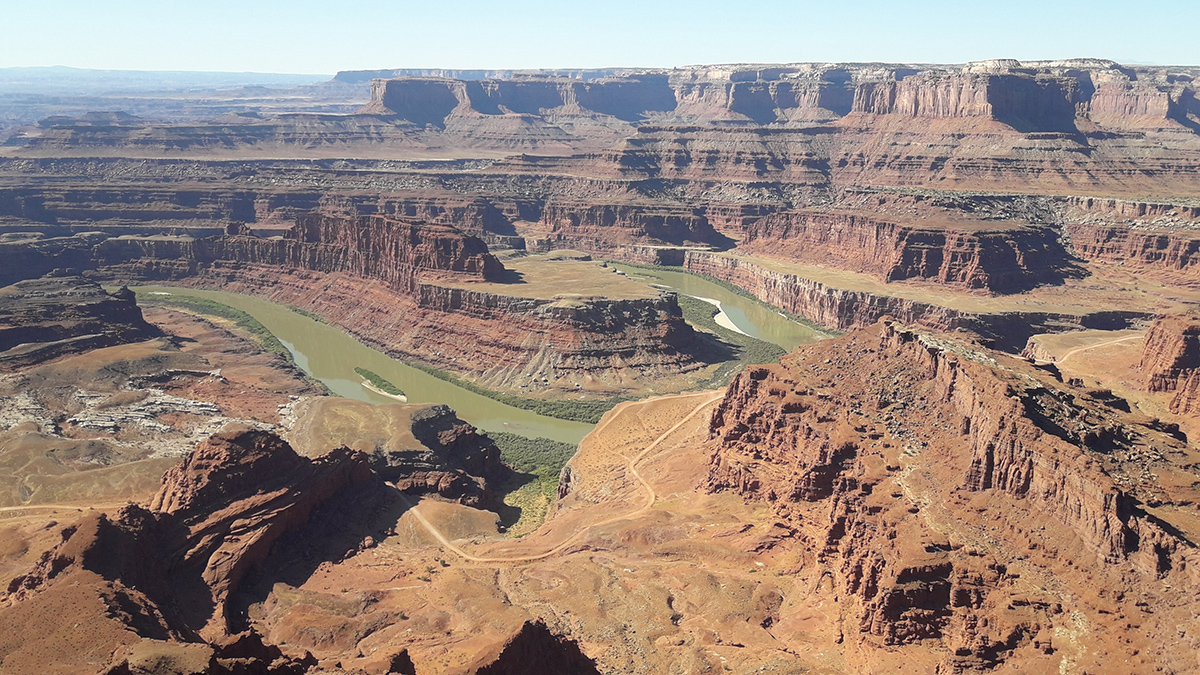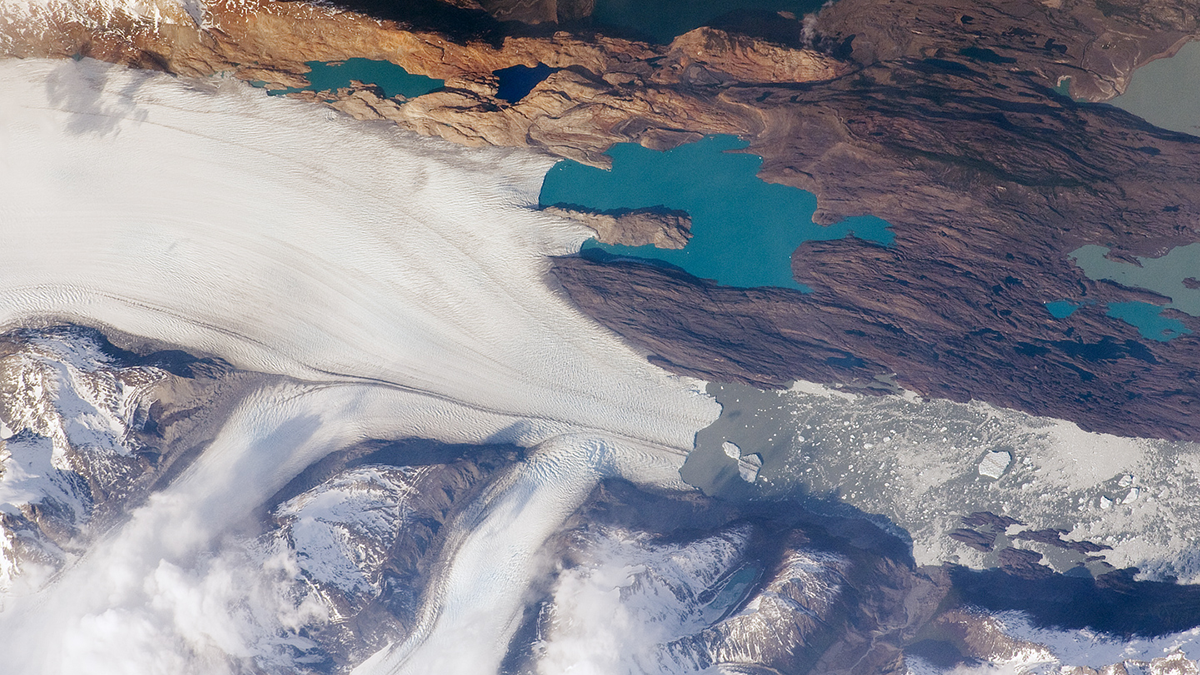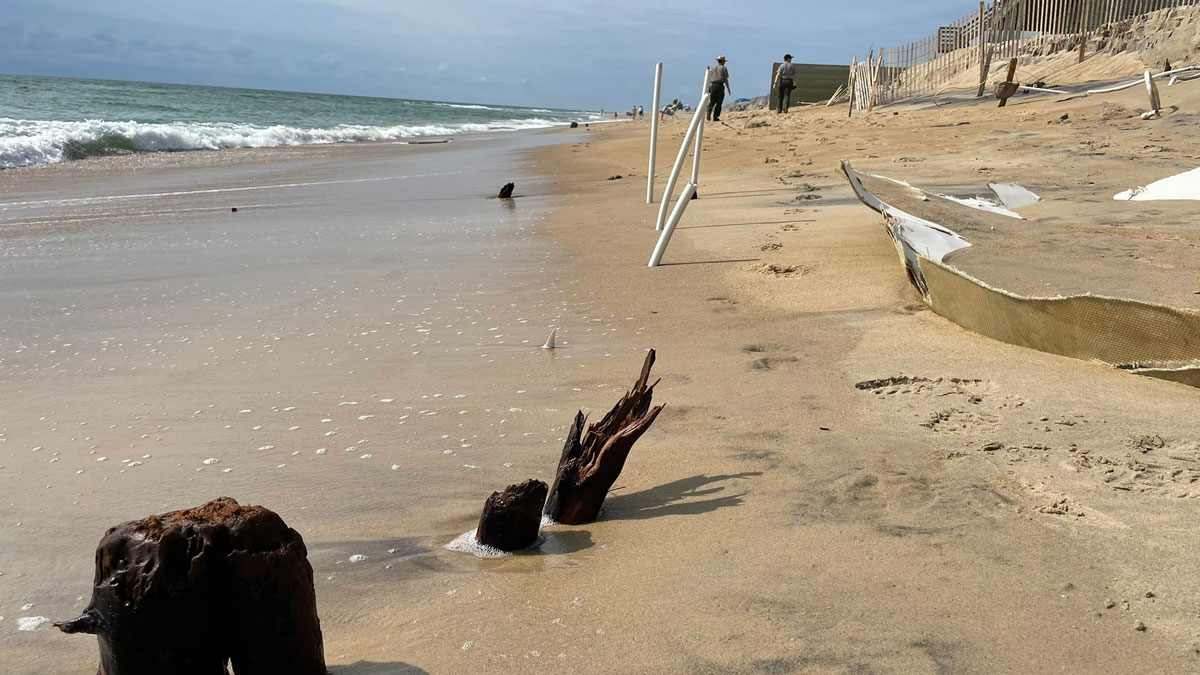Contrary to conventional wisdom that glaciers just carve landscapes, they can also form low-relief surfaces by sheltering rock from erosion, enriching understanding of how mountain landscapes evolve.
erosion & weathering
Compost and Biochar Could Boost Carbon Sequestration by Crushed Rock
Crushed rock additives may also help decrease soil emissions of other greenhouse gases, such as nitrous oxide and methane.
Climate Shifts Drive Episodic Drainage Changes
Drainage divide migration is influenced by tectonics and climate over long periods. New research in Israel shows that even shorter-term wet-dry cycles can move divides.
Erosion: An Overlooked Contributor to the Carbon Cycle
Since physical and chemical erosion yield comparable carbon fluxes, studying both together is essential to avoid biases in erosion-driven carbon flux estimates.
How Rivers Carved the Canyons of the Central Colorado Plateau
A new study offers insights into a puzzling piece of the geological history of the Grand Canyon and surrounding regions.
The Pulsed Pace of Glacial Erosion
New data from Lago Argentino, Patagonia reveal that glacial erosion occurs in discrete pulses, which challenges previous ideas that erosion rates have increased over time due to climate change.
How Rock Type Shapes River Networks and Influences Landscape Evolution
A new study in Chile shows how small differences in rock type can drive large differences in erosion, vegetation, and river networks, illuminating the role of mineralogy in shaping landscapes.
A Seychelles Shoreline Resists the Rising Seas
The geomorphology of a protected atoll likely contributed to its ability to maintain its shoreline over a turbulent half-century.
Buried Tree Stumps Show Shoreline Shifts of the Outer Banks
Storms are unburying centuries-old stumps on North Carolina’s barrier islands. Researchers hope these long-gone forests can help land managers plan for the future.
Elementary, My Dear: Al & Be Give Evidence of Past Climate Change
10Be and 26Al concentrations in river sand reveal an increase in erosion rate in the Brazilian Highlands consistent with the Mid-Pleistocene Transition, a major climatic shift that occurred about 1 million years ago.

